Temple Architecture in West Bengal
This collection documents 6 heritage sites across west bengal, representing profound expressions of Hindu civilization's architectural and spiritual heritage. These monuments exemplify the temple architectural tradition, with some maintaining unbroken traditions spanning millennia. Our comprehensive documentation, developed in collaboration with ASI archaeologists, conservation specialists, and scholarly institutions, preserves not merely physical structures but the sacred geometry, cosmological symbolism, and ritual spaces central to Dharmic worship. 1 holds UNESCO World Heritage recognition, acknowledging their universal significance to human civilization. Through royal patronage and community devotion, these structures embody the timeless principles of Bharatiya Sanskriti, connecting contemporary devotees to ancient traditions through stone, sculpture, and sacred spaces that continue to inspire reverence and wonder.
6 heritage sites with comprehensive documentation
Detailed architectural surveys and measurements
High-resolution photography and documentation
Average documentation completion: 80%
Total Sites:6
UNESCO Sites:1
Top Category:Temple (5)
Top Period:British Colonial Period (4)
Avg. Documentation:80%
6
Total Sites
1
UNESCO Sites
6
Featured
6 Sites Found
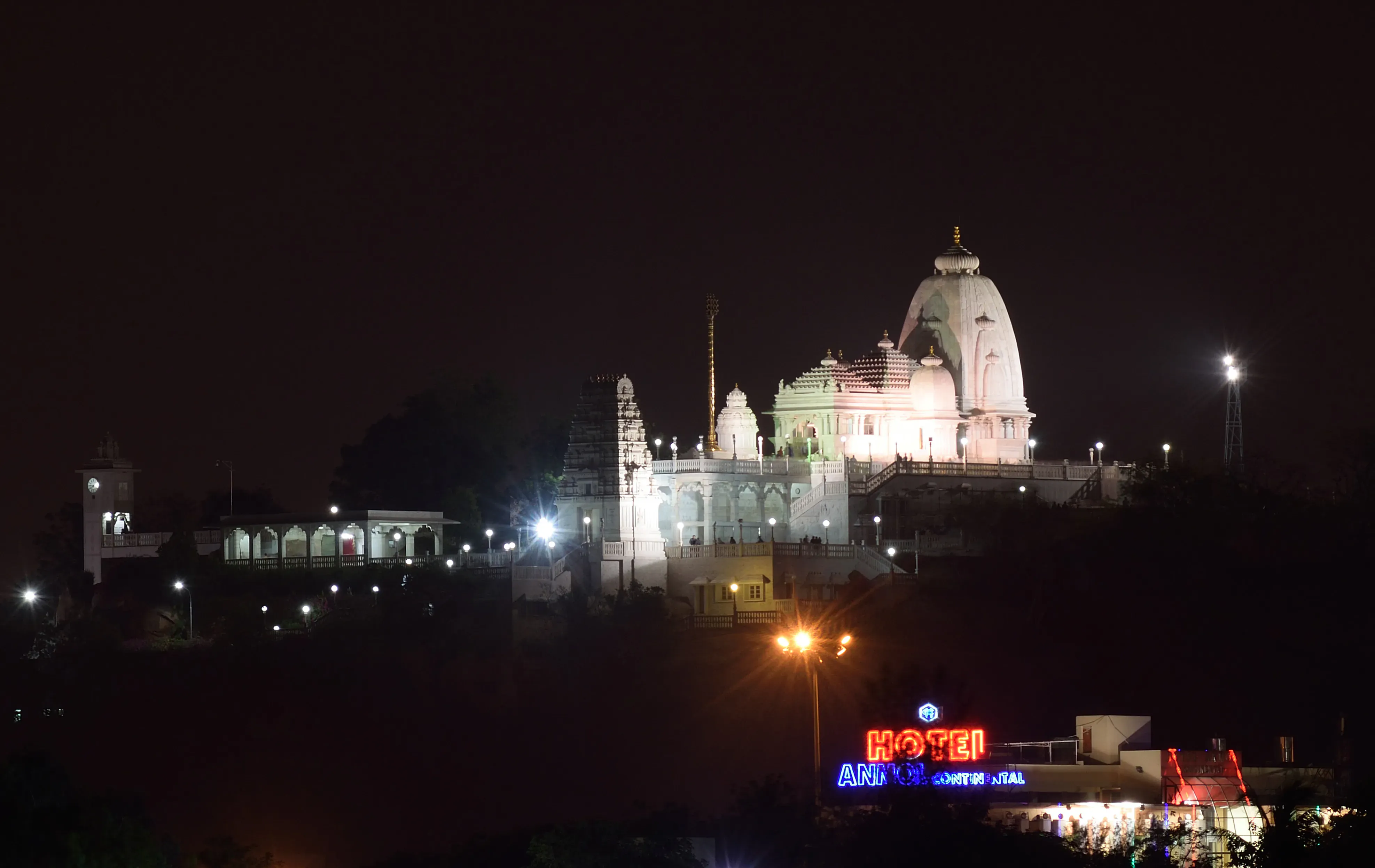
Featured
80% Documented
Ashutosh Chowdhury Avenue, Ballygunge, Kolkata (700019), West Bengal, India, West Bengal
The Kolkata skyline, a tapestry of colonial architecture and modern high-rises, is punctuated by a striking edifice of pristine white marble – the Birla Mandir. Having explored the basalt-carved caves and ancient temples of Maharashtra extensively, I was curious to experience this relatively modern temple dedicated to Lord Krishna and Radha. Stepping onto the grounds, I immediately felt a shift in atmosphere. The bustling city seemed to fade away, replaced by a sense of tranquility, amplified by the sheer expanse of the courtyard. The temple, built in the traditional Nagara style of North Indian temple architecture, is a magnificent sight. Unlike the cave temples of Ajanta and Ellora, where the rock itself forms the structure, here, every inch is meticulously crafted marble. The intricate carvings covering the temple walls are a testament to the artisans' skill. Depictions from the Bhagavad Gita and other Hindu scriptures unfold in detailed panels, narrating stories I’ve known since childhood, but seeing them rendered in this way felt fresh and inspiring. The shikharas, the towering curvilinear spires, reach towards the sky, their intricate detailing catching the light and creating a mesmerizing play of shadows. They reminded me of the shikharas of the Bhuleshwar Temple near Pune, albeit on a grander, more ornate scale. Entering the main sanctum, I was struck by the serene atmosphere. The idols of Radha and Krishna, adorned in vibrant silks and jewels, radiated a palpable sense of divinity. The air was thick with the scent of incense and the murmur of prayers, creating an immersive spiritual experience. Unlike the dimly lit interiors of many ancient temples in Maharashtra, the Birla Mandir was bathed in soft, natural light filtering through the large windows, illuminating the intricate carvings and adding to the sense of peace. I spent some time observing the devotees. Families, couples, and solitary individuals offered prayers with a quiet devotion. The diversity of the crowd was striking, a reflection of Kolkata's cosmopolitan nature. It was fascinating to witness the different ways people expressed their faith, from the elaborate rituals to the simple act of bowing their heads in reverence. This reminded me of the Kumbh Mela, where millions gather in faith, although here, the atmosphere was more intimate, more personal. The temple complex also houses a museum showcasing a collection of religious artifacts and scriptures. While smaller than the Chhatrapati Shivaji Maharaj Vastu Sangrahalaya in Mumbai, it offered a fascinating glimpse into Hindu mythology and iconography. I was particularly drawn to the miniature paintings depicting scenes from the Ramayana and Mahabharata, their vibrant colors and intricate details capturing the essence of these epic tales. As I walked through the manicured gardens surrounding the temple, I noticed a small pond with a fountain. The gentle sound of the water cascading over the rocks added to the sense of tranquility. It was a welcome respite from the city's noise and chaos. The gardens, unlike the rugged, natural landscapes surrounding the forts and caves of Maharashtra, were meticulously planned and maintained, offering a different kind of beauty. Leaving the Birla Mandir, I felt a sense of peace and rejuvenation. While the architectural style and the deities worshipped were different from what I was accustomed to in Maharashtra, the underlying spirit of devotion and reverence was the same. The experience reinforced the idea that faith, in its various forms, transcends geographical boundaries and cultural differences. The Birla Mandir, with its stunning architecture and serene atmosphere, stands as a testament to the enduring power of faith and a beautiful addition to India's rich tapestry of temples.
Temple
British Colonial Period
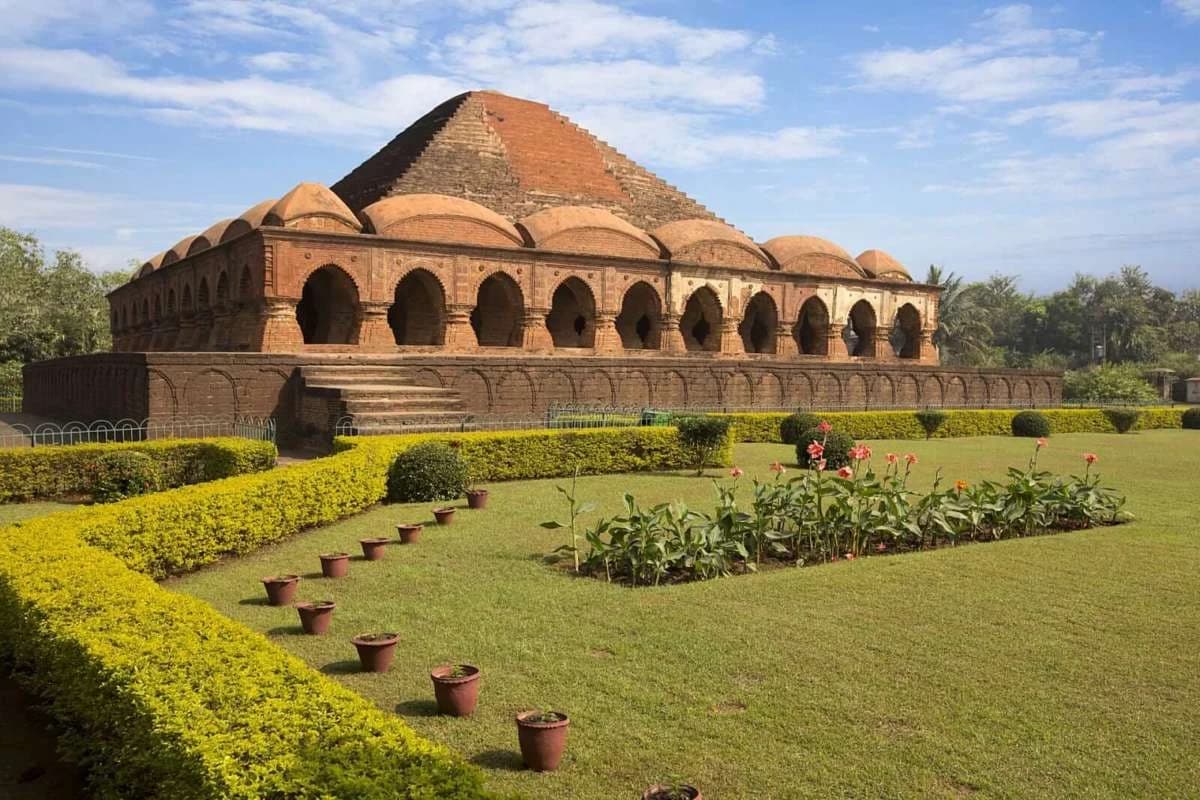
Featured
80% Documented
Dalmadal Para, Bankura, Bishnupur (722122), West Bengal, India, West Bengal
The terracotta blush of Bishnupur’s temples hit me the moment I stepped off the bus. Having spent years immersed in the sandstone grandeur of Rajasthan's forts and palaces, I was unprepared for this utterly unique architectural landscape. Here, under the Bengal sun, wasn't the imposing scale I was accustomed to, but an intricate, almost delicate beauty crafted from the very earth itself. My first stop was the Rasmancha, a pyramidal structure unlike anything I’d encountered before. Built in the 17th century by King Bir Hambir, it serves as a platform for displaying Radha-Krishna idols during the Ras festival. The multiple arched openings, stacked tier upon tier, create a fascinating interplay of light and shadow. The laterite stone foundation provides a sturdy base for the delicate terracotta work above, a testament to the ingenuity of the Malla dynasty architects. I circled the structure slowly, captivated by the rows of miniature shikharas adorning the upper levels, each a tiny echo of the larger temple forms found elsewhere in the complex. From the Rasmancha, I moved on to the Jor Bangla Temple, its name derived from the distinctive “hut” shaped roof – a style I later learned is called the “chala” style. The terracotta panels here were breathtaking. While weathered by time and the elements, the intricate carvings depicting scenes from the epics, the Ramayana and the Mahabharata, were still remarkably clear. I could discern the delicate features of the figures, their expressions, even the folds of their garments. It struck me how these panels served not just as decoration, but as a visual narrative, bringing the stories to life for the devotees. The Madan Mohan Temple, with its single towering shikhara, offered a different perspective. Its curved roof, reminiscent of a bamboo hut, contrasted sharply with the angularity of the Rasmancha. Here, the terracotta work focused primarily on floral motifs and geometric patterns, creating a sense of harmonious balance. I spent a considerable amount of time studying the intricate details, marveling at the skill of the artisans who had shaped and fired these clay panels centuries ago. My exploration continued to the Shyam Rai Temple, the largest of the Bishnupur temples. Its five-pinnacled roof, known as the “pancharatna” style, dominated the skyline. The sheer scale of the structure was impressive, yet the terracotta ornamentation retained its intricacy. Here, the panels depicted a wider range of subjects, from scenes of courtly life to depictions of various deities. I noticed a recurring motif of the lotus flower, a symbol of purity and enlightenment, woven into the intricate designs. As I wandered through the complex, I couldn't help but compare these terracotta marvels to the stone structures of Rajasthan. While the Rajput forts and palaces exude an aura of power and grandeur, the Bishnupur temples possess a quiet elegance, a testament to the artistic sensibilities of the Malla rulers. The terracotta, a material so deeply connected to the earth, lends these temples a unique warmth and intimacy. The setting sun cast long shadows across the temple grounds, painting the terracotta in hues of orange and gold. As I prepared to leave, I felt a deep sense of admiration for the artisans who had poured their hearts and souls into creating these masterpieces. Bishnupur, with its terracotta treasures, is a testament to the enduring power of art and a reminder that beauty can be found in the most unexpected places. It’s a place I won’t soon forget, a unique counterpoint to the majestic stone structures I know so well from my own desert homeland.
Temple
Bengal Renaissance Period
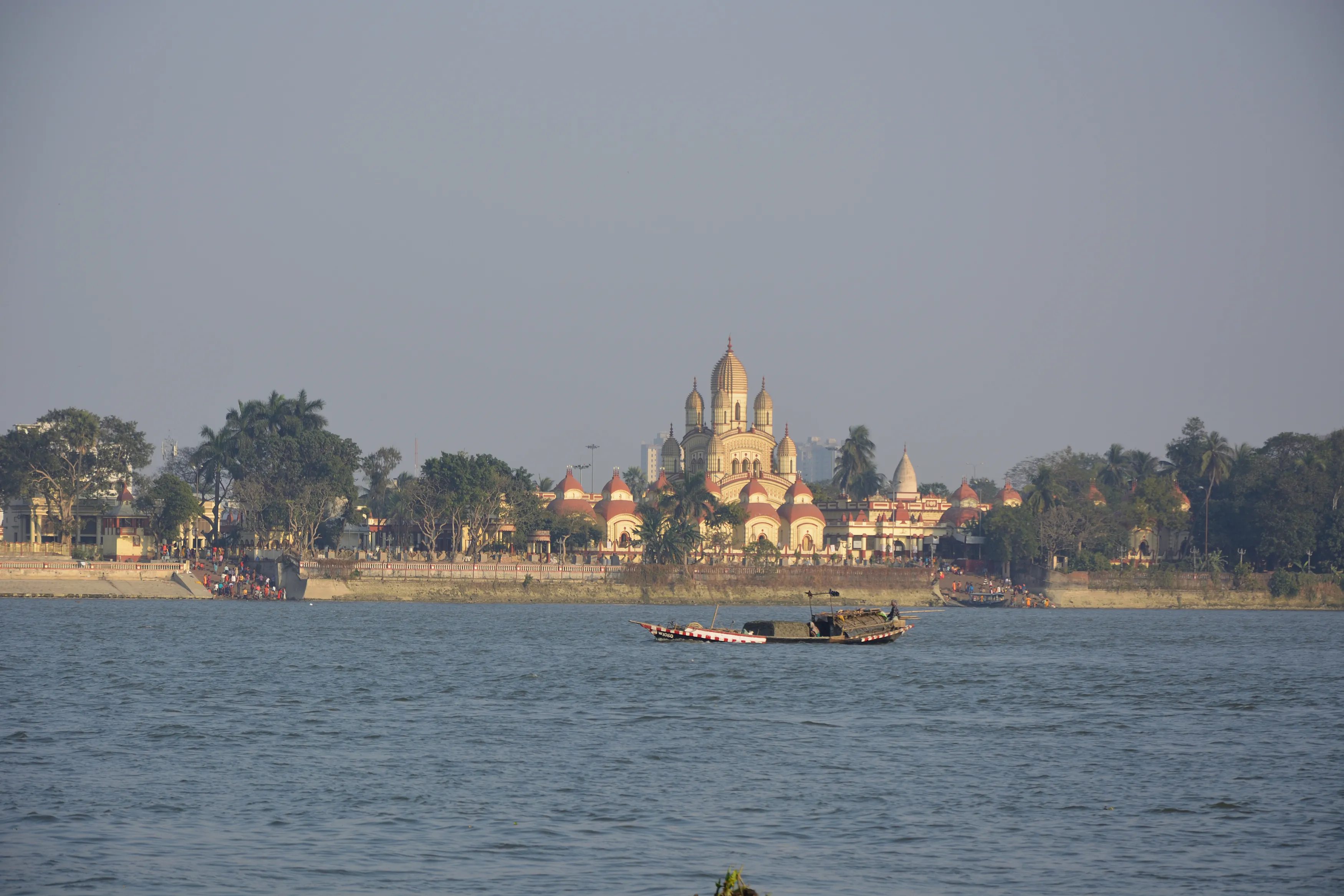
Featured
80% Documented
Dakshineswar Kali Temple Road, North 24 Parganas, Kolkata (700075), West Bengal, India, West Bengal
The cacophony of Kolkata seemed to melt away as I stepped onto the ghats leading to the Dakshineswar Kali Temple. The Hooghly River, a swirling tapestry of ochre and grey, flowed alongside, its rhythmic lapping a soothing counterpoint to the city’s usual frenetic pulse. This wasn't just another temple on my list of 500+ documented sites; it was palpable, a living entity breathing with history and devotion. The temple complex, a sprawling nine-spired marvel dedicated to Bhavatarini, a form of Kali, immediately captured my attention. Its distinctive 'nava-ratna' style, with its curving, multi-tiered roofs, stood in stark contrast to the often-seen Dravidian architecture of South India. The whitewashed walls, though showing the patina of time and weathering, radiated a sense of serenity, their pristine surface reflecting the bright Bengal sun. I spent a good hour simply circling the main temple, observing the intricate terracotta panels that adorned the lower levels. These panels, depicting scenes from the epics and Puranas, weren't mere decorations; they were narratives etched in clay, whispering tales of gods and demons, love and loss. Crossing the nat-mandir, the large covered hall for devotees, I felt the energy shift. The air thrummed with a palpable devotion, a collective hum of prayers and chanting. The main sanctum, comparatively small and dimly lit, housed the deity of Bhavatarini. The goddess, a fierce yet benevolent figure, stood on the chest of Shiva, who in turn lay on a bed of lotus flowers. The iconography was powerful, a visual representation of Shakti, the divine feminine energy. The silver adornments, the vibrant red of the sindoor, and the flickering oil lamps created an atmosphere that was both mesmerizing and deeply spiritual. Beyond the main temple, the complex unfolded like a series of nested courtyards. The twelve Shiva temples, dedicated to different aspects of the deity, lined the ghats, each a miniature echo of the main structure. Their uniformity, a rhythmic repetition of form and colour, created a sense of architectural harmony. I noticed the subtle variations in their ornamentation, the individual touches that distinguished one from the other, a testament to the craftsmanship of the artisans who built them. I found myself drawn to the Radha-Krishna temple, a smaller, more intimate structure located to the north of the main shrine. Its architecture, while similar to the main temple, felt distinctly different, imbued with a softer, more playful energy. The intricate carvings on the walls depicted scenes of Radha and Krishna's divine love, a stark contrast to the powerful imagery of Kali. This juxtaposition, the fierce and the gentle, the destructive and the creative, seemed to encapsulate the very essence of Hinduism. As the sun began to set, casting long shadows across the ghats, I walked towards the river. The evening aarti had begun, and the air was filled with the scent of incense and the sound of devotional songs. The reflection of the temple, bathed in the warm glow of the setting sun, shimmered on the water, creating an ethereal spectacle. It was a moment of profound beauty, a culmination of the day's exploration. Dakshineswar isn't just a temple; it's a confluence of history, architecture, and spirituality. It's a place where the tangible and the intangible intertwine, where the whispers of the past resonate in the present. As I left the complex, the image of Bhavatarini, fierce and compassionate, remained etched in my mind, a reminder of the power and beauty of the divine feminine. This wasn't just another photograph for my collection; it was a story etched in light and shadow, a testament to the enduring spirit of faith.
Temple
British Colonial Period
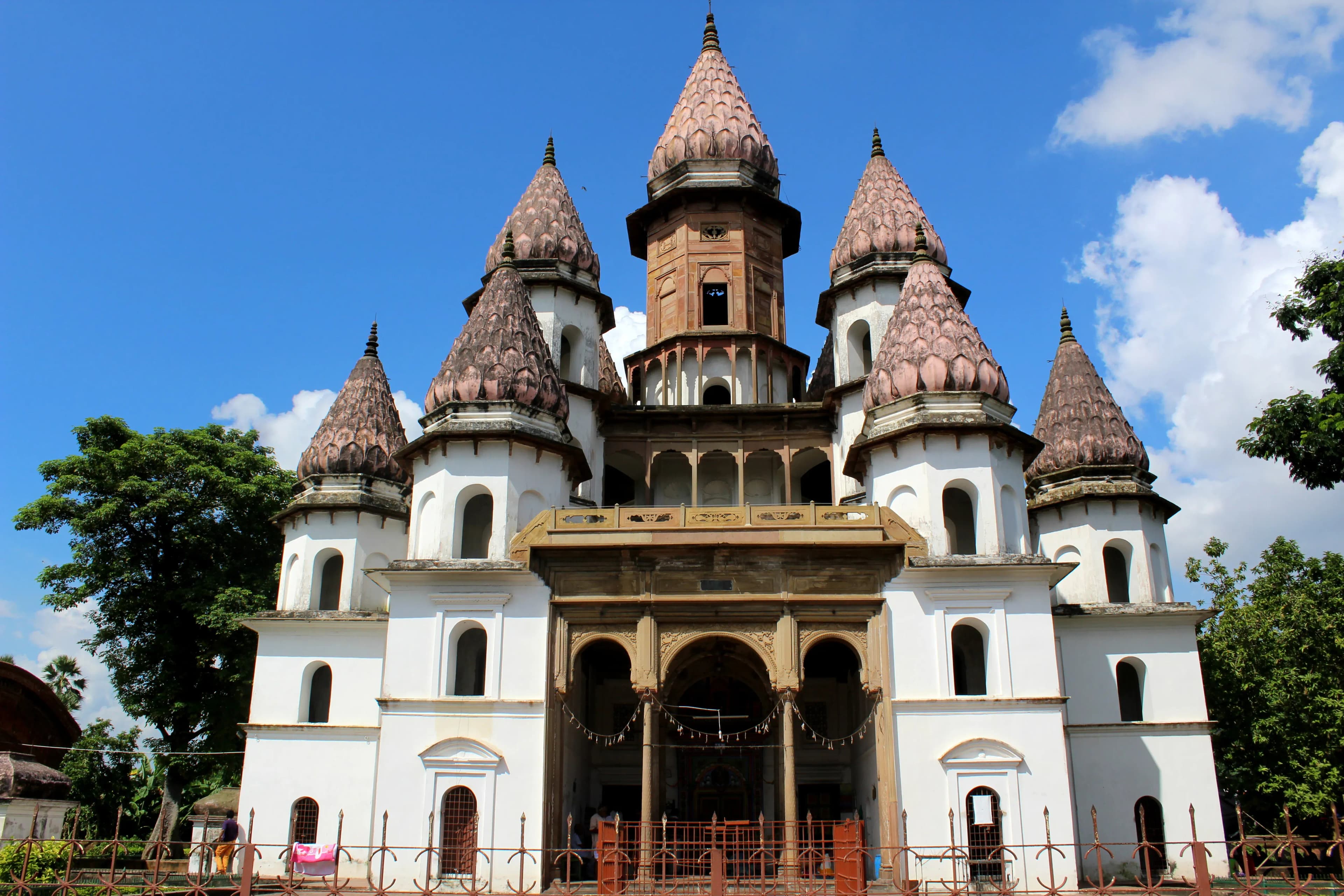
Featured
80% Documented
Grand Trunk Rd, Hooghly, Bansberia (712502), West Bengal, India, West Bengal
The terracotta-red spires of the Hangseshwari Temple, rising like a cluster of budding lotuses against the muted Bengal sky, were a sight I'd anticipated for months. As a Gujarati, steeped in the architectural traditions of my own land, I was eager to experience this unique 19th-century marvel in Bansberia, a town whispering stories of Bengal's rich past. The Hooghly River, flowing serenely nearby, seemed to amplify the temple's tranquil aura. Approaching the temple, the sheer audacity of its design became apparent. Unlike the traditional shikharas of North Indian temples or the gopurams of South India, Hangseshwari presented a novel form – a cluster of thirteen towers, arranged in an elliptical shape around a central, larger spire. Each of these miniature shikharas, or rather, ratnas, as they are locally known, is adorned with intricate terracotta panels depicting scenes from Hindu mythology. The deep red of the baked clay, now softened by time and weather, contrasted beautifully with the verdant green of the surrounding foliage. Stepping inside the elliptical ambulatory, I was immediately struck by the play of light and shadow. The narrow openings between the ratnas allowed slivers of sunlight to penetrate the inner sanctum, creating an ethereal atmosphere. The central chamber, housing the deity Hangseshwari (literally, "swan-riding goddess"), was relatively dark, adding to the sense of mystery and reverence. The goddess, however, was not in the traditional iconographic form. Instead, a symbolic representation, a lotus bud, takes her place, further adding to the temple's unique character. The terracotta work, undeniably the highlight of Hangseshwari, deserves special mention. The panels, though weathered, retain a remarkable level of detail. I spent a considerable amount of time examining the intricate depictions of deities, celestial beings, and scenes from epics like the Ramayana and the Mahabharata. The craftsmanship is exquisite, showcasing the skill of the Bengali artisans of the time. The narrative quality of these panels is particularly striking, transforming the temple walls into a visual chronicle of Hindu mythology. One aspect that intrigued me was the fusion of architectural styles evident in the temple's design. While the ratnas bear a resemblance to North Indian shikharas, the overall elliptical layout and the use of terracotta are distinctly Bengali. This blending of influences speaks to the region's history as a cultural crossroads, absorbing and adapting elements from various traditions. However, the temple isn't without its scars. Years of neglect and exposure to the elements have taken their toll. Some of the terracotta panels are damaged, and the once vibrant colours have faded. Restoration efforts are underway, but the sheer scale of the work makes it a slow and painstaking process. It's a poignant reminder of the fragility of our heritage and the importance of continuous preservation efforts. As I walked around the temple, absorbing its unique atmosphere, I couldn't help but draw parallels with the stepwells of Gujarat, particularly the intricate carvings and the play of light and shadow. While the architectural styles are vastly different, the underlying artistic principles seemed to resonate. It reinforced the idea that despite the diversity of India's architectural landscape, there's a common thread of artistic ingenuity and spiritual expression that binds them together. Leaving Hangseshwari, I carried with me not just photographs and notes, but a deeper appreciation for the architectural ingenuity of Bengal. This temple, a testament to the region's rich artistic heritage, stands as a unique blend of tradition and innovation, a must-see for anyone seeking to explore the architectural tapestry of India.
Temple
British Colonial Period
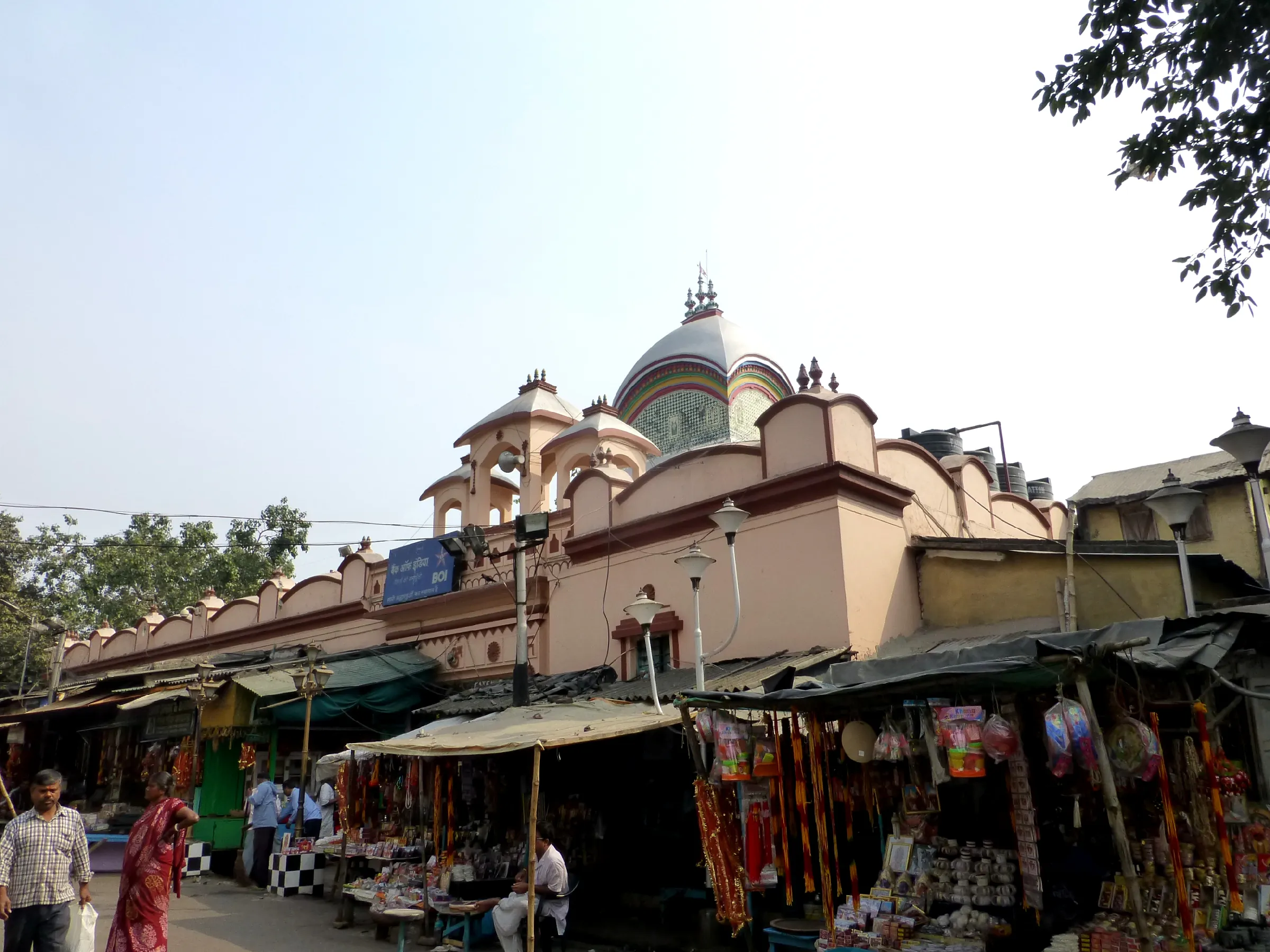
UNESCO
Featured
80% Documented
Kalighat Road, Kolkata, Kolkata (700026), West Bengal, India, West Bengal
The air hung thick and heavy, not just with the Kolkata humidity, but with a palpable sense of devotion. Garlands of marigolds and hibiscus blazed against the backdrop of the soot-stained Kalighat Kali Temple, their vibrant colours a stark contrast to the aged brick and stone. This wasn't the pristine, symmetrical beauty of the Rajput forts I'm accustomed to back in Rajasthan. This was something rawer, more visceral. The temple, nestled in the heart of Kolkata, pulsated with a chaotic energy. A cacophony of sounds – chanting, bells, the hawkers’ cries – rose and fell like the tide. Navigating the narrow lanes leading to the main shrine was an experience in itself. The air was thick with incense, and the ground, slick with offerings and the remnants of rituals. It was a sensory overload, a far cry from the ordered serenity of, say, the Mehrangarh Fort. The architecture of the Kalighat temple is distinct. Unlike the imposing sandstone structures of Rajasthan, this temple is relatively modest in size. The current structure, built in the 19th century, features a distinctive Bengali style with a curved, sloping roof known as a *dochala*. The main shrine, however, felt ancient, imbued with centuries of worship. The idol of Kali herself is striking. Her jet-black face, adorned with a garland of skulls and a protruding tongue, is both terrifying and mesmerizing. Her three eyes seemed to pierce through the throngs of devotees, acknowledging their prayers and anxieties. What struck me most was the sheer intensity of the faith on display. Devotees, from all walks of life, pressed forward, their faces etched with a mixture of hope and desperation. Some offered flowers, others coconuts, still others whispered fervent prayers. The priests, their foreheads smeared with ash, performed rituals with practiced ease, their chants adding to the hypnotic rhythm of the temple. I watched a young woman, her eyes brimming with tears, offer a lock of her hair to the goddess. It was a powerful moment, a testament to the deep-seated belief that permeates this place. This wasn't just a temple; it was a living, breathing entity, a conduit between the human and the divine. The experience was further intensified by the presence of the *pandits*, the temple priests. While their role is integral to the rituals, their aggressive solicitation of donations felt jarring. It was a stark reminder of the commercialization that often accompanies religious fervor, a phenomenon not entirely unfamiliar in Rajasthan's tourist-heavy temples, but here it felt more pronounced, more intertwined with the very fabric of worship. Stepping back from the immediate crush of the main shrine, I noticed the smaller shrines dedicated to other deities scattered around the complex. Each had its own unique energy, its own dedicated following. The temple complex, despite its chaotic nature, felt like a microcosm of the city itself – a melting pot of different beliefs and practices, all coexisting within a shared space. As I left the Kalighat Kali Temple, the chanting and the scent of incense still clinging to my clothes, I felt a profound sense of awe. This wasn't just a visit to a temple; it was an immersion into a different world, a world where faith and tradition reign supreme. It was a world far removed from the majestic silence of Rajasthan's desert forts, yet equally captivating, equally powerful. The experience served as a potent reminder of the diverse tapestry of India's spiritual landscape, a tapestry woven with threads of devotion, ritual, and unwavering belief.
Temple
Bengal Renaissance Period
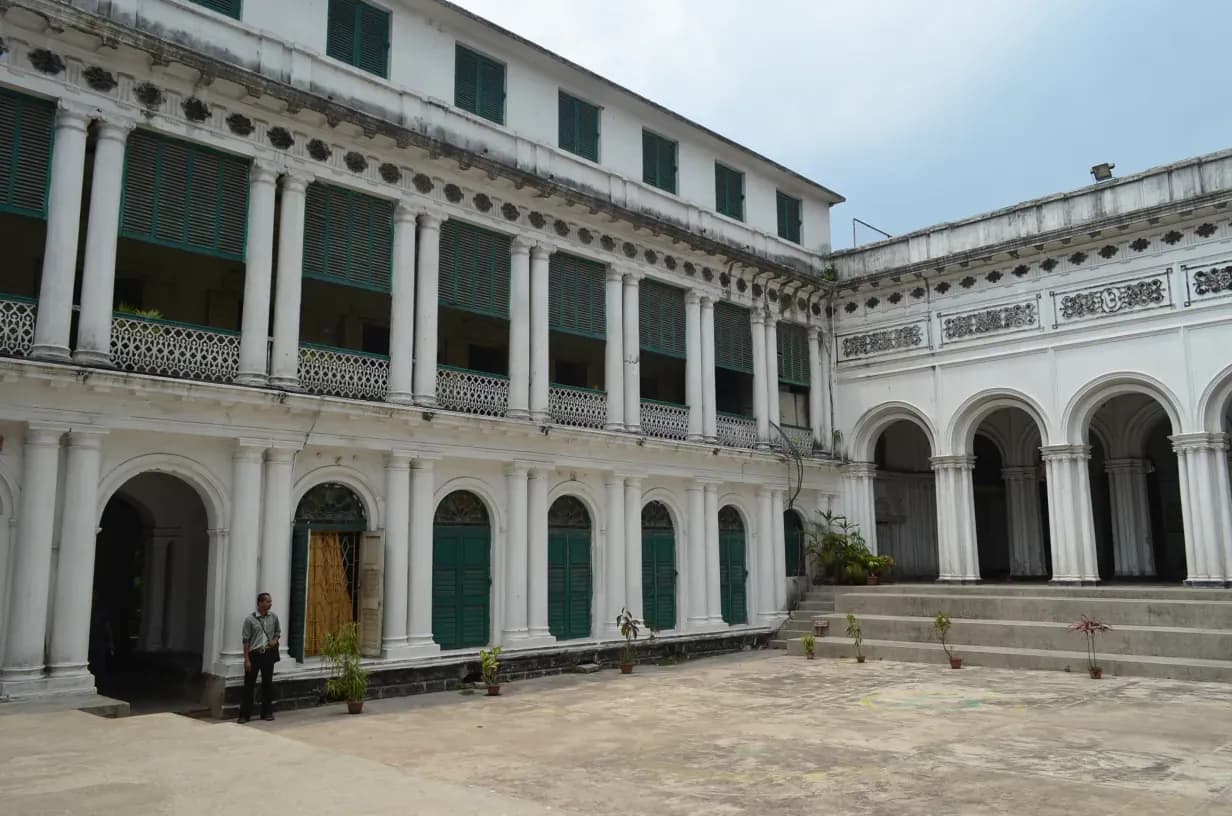
Featured
80% Documented
6, Dwarkanath Tagore Lane, Jorasanko, Kolkata (700007), West Bengal, India, West Bengal
The ochre walls of Jorasanko Thakur Bari, bathed in the humid Kolkata sun, exuded a quiet dignity. Stepping through the imposing gateway, I felt transported from the bustling city into a sanctuary of history and creativity. As a Chennaiite steeped in the grandeur of Dravidian temple architecture, I was eager to experience the unique charm of this Bengali haveli, the ancestral home of the Tagore family. The sprawling complex, a fascinating blend of architectural styles reflecting different periods of construction and renovation, immediately captivated me. Unlike the towering gopurams and mandapas I was accustomed to, Jorasanko presented a more intimate, inward-looking architecture. The series of interconnected courtyards, surrounded by residential wings, spoke of a close-knit family life, a world within a world. The lack of ostentatious ornamentation, so characteristic of South Indian temples, was replaced by a subtle elegance. The intricate stucco work adorning the cornices and window frames, a hallmark of Bengali architecture, caught my eye. These delicate floral and geometric patterns, though different in execution, reminded me of the intricate carvings found on the stone pillars of our temples. The Thakurdalan, the central courtyard, served as the heart of the house. I could almost picture the hustle and bustle of family gatherings, theatrical performances, and intellectual discussions that once animated this space. The surrounding verandahs, supported by slender columns, provided shade and a vantage point to observe the activities within the courtyard. This architectural feature, creating a seamless transition between indoor and outdoor spaces, resonated with the design principles of traditional South Indian homes, where courtyards play a vital role in ventilation and social interaction. Exploring the various wings of the house, each dedicated to a different branch of the family, I was struck by the sense of history embedded within the walls. The Maharshi Bhavan, where Rabindranath Tagore spent a significant part of his life, was particularly poignant. His study, preserved with his personal belongings, offered a glimpse into the mind of a literary giant. The simplicity of the room, devoid of extravagant furnishings, spoke volumes about his focus on intellectual pursuits. This contrasted sharply with the opulent interiors of Chettinad mansions I had seen back home, where wealth and status were prominently displayed. The influence of European architecture was evident in certain parts of the house, particularly in the use of arched windows and doorways. This fusion of styles, a testament to the family's cosmopolitan outlook, created a unique architectural vocabulary. While the core of the haveli retained its Bengali character, the subtle incorporation of Western elements added another layer of complexity. This reminded me of the Indo-Saracenic architecture prevalent in Chennai, a similar blend of indigenous and colonial styles. The museum within the complex housed a treasure trove of artifacts, including paintings, manuscripts, and photographs, documenting the rich history of the Tagore family. Observing the exquisite craftsmanship of the furniture and the intricate details of the paintings, I was reminded of the rich artistic traditions of both Bengal and South India. Despite the geographical distance, the underlying appreciation for beauty and artistic expression seemed to connect these two distinct cultures. Leaving Jorasanko Thakur Bari, I carried with me a profound appreciation for the architectural and cultural heritage of Bengal. While distinct from the Dravidian architecture I was familiar with, the haveli offered a unique perspective on the evolution of domestic architecture in India. The experience underscored the importance of preserving these historical spaces, not just as monuments to the past, but as living testaments to the rich tapestry of Indian culture.
Museum
British Colonial Period
Related Collections
Discover more heritage sites with these related collections
Explore More Heritage
Explore our comprehensive archive of 6 heritage sites with detailed documentation, 3D models, floor plans, and historical research. Each site page includes visitor information, conservation status, architectural analysis, and downloadable resources for students, researchers, and heritage enthusiasts.
Historical Context
The historical significance of these 6 heritage sites reflects the profound integration of dharma, artha, and kama in Hindu civilization. Across successive eras, royal patrons and spiritual leaders commissioned these sacred edifices as acts of devotion, fulfilling dharmic obligations while creating eternal spaces for worship and community gathering. Various dynasties contributed unique architectural visions, establishing traditions that honored Vedic principles while incorporating regional characteristics. Master builders (sthapatis) applied knowledge from ancient shilpa shastras (architectural treatises) and vastu shastra (spatial science), creating structures embodying cosmic principles and sacred geometry. Epigraphic inscriptions and archaeological evidence reveal sophisticated networks of guilds, royal support, and community participation sustaining these massive undertakings across decades or centuries. These monuments served as centers of Vedic learning, Sanskrit scholarship, classical arts, and spiritual practice—roles many continue fulfilling today, maintaining unbroken traditions that connect contemporary Bharat to its glorious civilizational heritage.
Architectural Significance
The architectural magnificence of these 6 heritage sites demonstrates the sophisticated application of shilpa shastra principles to create spaces embodying cosmic order and divine presence. The temple tradition manifests through characteristic elements: distinctive regional architectural elements, spatial planning principles, and decorative vocabularies. Employing indigenous materials—locally sourced stone, traditional lime mortars, and time-honored construction techniques—sthapatis created structures demonstrating advanced engineering knowledge. The corbelling techniques display extraordinary precision, achieving structural stability through geometric principles. Dome construction methodologies demonstrate sophisticated understanding of load distribution and compression forces, centuries before modern engineering formalized such knowledge. Beyond structural excellence, these monuments serve as three-dimensional textbooks of Puranic narratives, Vedic cosmology, and iconographic traditions. Sculptural programs transform stone into divine forms, teaching dharma through narrative reliefs and creating sacred atmospheres conducive to devotion and contemplation. Recent photogrammetric documentation and 3D laser scanning reveal original polychromy, construction sequences, and historical conservation interventions, enriching our understanding of traditional building practices and material technologies that sustained these magnificent creations.
Conservation & Preservation
Preserving these 6 sacred heritage sites represents our collective responsibility to safeguard Bharat's architectural and spiritual heritage for future generations. Varying protection statuses underscore the ongoing need for comprehensive heritage conservation programs. Conservation challenges include environmental degradation, biological colonization, structural deterioration, and pressures from increased visitation. Professional conservators address these through scientifically-grounded interventions: structural stabilization using compatible traditional materials, surface cleaning employing non-invasive techniques, vegetation management, and drainage improvements. Advanced documentation technologies—laser scanning, photogrammetry, ground-penetrating radar—create detailed baseline records enabling precise condition monitoring and informed conservation planning. When restoration becomes necessary, traditional building techniques and materials sourced from historical quarries ensure authenticity and compatibility. This comprehensive approach honors the devotion and craftsmanship of original builders while applying contemporary conservation science to ensure these monuments endure, continuing their roles as centers of worship, cultural identity, and civilizational pride.
Visitor Information
Experiencing these 6 sacred heritage sites offers profound connection to Bharat's spiritual and architectural heritage. west bengal maintains excellent connectivity through air, rail, and road networks, with accommodation options ranging from budget to premium near major heritage sites. The optimal visiting period extends from October through March when pleasant temperatures facilitate comfortable exploration. Entry fees typically range from ₹25-40 for Indian nationals and ₹250-600 for international visitors at ASI-protected monuments. Photography for personal use is generally permitted, though professional equipment may require advance permissions. Visiting these sacred spaces requires cultural sensitivity: modest attire covering shoulders and knees, shoe removal in temple sanctums, quiet respectful demeanor, and recognition that these remain active worship centers where devotees practice centuries-old traditions. Meaningful engagement comes through understanding basic Hindu iconography, mythological narratives, and ritual contexts that bring these monuments to life.
Key Facts & Statistics
•
Total documented heritage sites: 6
•
UNESCO World Heritage Sites: 1
Source: UNESCO World Heritage Centre
•
Temple: 5 sites
•
Museum: 1 sites
•
Classical Bengali Eclectic Terracotta Brick Temples architectural style: 1 sites
•
Not South Indian Temple. Indo-Saracenic, Eclectic, blends Indian, European. architectural style: 1 sites
•
Nagara Architecture, Hindu Temple Architecture, North Indian Curvilinear Towers architectural style: 1 sites
•
Navaratna Temple, Bengali Hindu, Nine spires on curved roof. architectural style: 1 sites
•
Bengali Navaratna Temple, Religious, Nine spires around central. architectural style: 1 sites
•
British Colonial Period period construction: 4 sites
•
Bengal Renaissance Period period construction: 2 sites
•
Average documentation completion score: 80%
•
west bengal ranks among India's top heritage destinations with 6 documented sites
•
Featured flagship heritage sites: 6
•
Comprehensive digital archiving preserves heritage for future generations
•
Comprehensive digital archiving preserves heritage for future generations
•
Comprehensive digital archiving preserves heritage for future generations
•
Comprehensive digital archiving preserves heritage for future generations
•
Comprehensive digital archiving preserves heritage for future generations
•
Comprehensive digital archiving preserves heritage for future generations
Frequently Asked Questions
How many heritage sites are documented in west bengal?
This collection includes 6 documented heritage sites in west bengal. Of these, 1 are UNESCO World Heritage Sites. Each site has comprehensive documentation including photos, floor plans, and historical research.
What is the best time to visit heritage sites in west bengal?
October to March is ideal for visiting heritage sites in west bengal, with pleasant temperatures (15-25°C) and minimal rainfall. Avoid May-June (peak summer) and July-September (monsoon season). Major festivals also offer unique cultural experiences. Check individual site pages for specific visiting hours and seasonal closures.
What are the entry fees for heritage sites?
ASI-protected monuments charge ₹25-₹40 for Indian nationals and ₹250-₹600 for foreign tourists. State-protected sites often have lower or no entry fees. Many temples and religious sites are free. Children under 15 typically enter free. Still photography is usually included; video may require additional permits.
Are photography and videography allowed at heritage sites?
Still photography for personal use is generally permitted at most heritage sites. Tripods, flash photography, and commercial filming usually require special permissions. Some sites restrict photography of murals, sculptures, or sanctums. Drones are prohibited without explicit authorization. Always respect signage and guidelines at individual monuments.
How do I reach heritage sites in west bengal?
west bengal is well-connected by air, rail, and road. Major cities have airports with domestic and international flights. Indian Railways operates extensive networks. State and private buses connect smaller towns. Most heritage sites are accessible by taxi, auto-rickshaw, or rental vehicles. Plan 2-3 hours per major monument.
Are these heritage sites wheelchair accessible?
Accessibility varies significantly. Major UNESCO sites and recently renovated monuments often have ramps and accessible facilities. However, many historical structures have steps, uneven surfaces, and narrow passages. Contact site authorities in advance for specific accessibility information. Our site pages indicate known accessibility features where available.
Are guided tours available at heritage sites?
Licensed guides are available at most major heritage sites, typically charging ₹200-₹500 for 1-2 hour tours. ASI-approved guides provide historical and architectural insights. Audio guides are available at select UNESCO sites. Our platform offers virtual tours and detailed documentation for major monuments.
What is the conservation status of these heritage sites?
Many sites are protected under heritage conservation laws. Active conservation includes structural stabilization, surface cleaning, vegetation control, and drainage management. Digital documentation helps monitor deterioration. Ongoing surveys track condition changes for evidence-based interventions.
What are the key features of temple architecture?
Temple architecture features distinctive regional architectural elements, spatial planning principles, and decorative vocabularies. These elements evolved over centuries, reflecting regional climate, available materials, construction techniques, and cultural preferences. Each monument demonstrates unique variations within the broader architectural tradition.
What documentation is available for these heritage sites?
Each site includes high-resolution photography, architectural measurements, historical research, and expert annotations. Documentation averages 80% completion.
How much time should I allocate for visiting?
Plan 2-3 hours for major monuments to appreciate architectural details and explore grounds. Smaller sites may require 30-60 minutes. Multi-site itineraries should allocate travel time. Early morning or late afternoon visits offer better lighting for photography and fewer crowds. Check individual site pages for recommended visiting durations.
What is the cultural significance of these heritage sites?
These monuments represent India's diverse cultural heritage, reflecting centuries of architectural innovation, religious traditions, and artistic excellence. They serve as living links to historical societies, preserving knowledge about construction techniques, social structures, and cultural values. Many sites remain active centers of worship and community gathering.
What other attractions are near these heritage sites?
west bengal offers diverse tourism experiences beyond heritage monuments. Explore local museums, craft villages, nature reserves, and cultural festivals. Many heritage sites are clustered in historic towns with traditional markets and cuisine. Our site pages include nearby attraction recommendations and multi-day itinerary suggestions.
How can I practice responsible heritage tourism?
Respect site rules including photography restrictions and designated pathways. Don't touch sculptures, murals, or walls. Dispose waste properly. Hire local guides to support communities. Avoid visiting during restoration work. Learn about cultural contexts before visiting. Report damage to authorities. Your responsible behavior helps preserve heritage for future generations.
References & Sources
[4]
📍
StateWest Bengal
🎨
StyleTemple
What is Temple Architecture?
Temple architecture is a distinctive style of Indian temple architecture characterized by its unique design elements and construction techniques. This architectural tradition flourished in west-bengal and represents a significant period in Indian cultural heritage. Features include intricate carvings, precise proportions, and integration with religious symbolism.
Period:
6th-18th century CEPrimary Region:
west-bengalTotal Sites:
0 documentedCategory:
VariousKey Characteristics
- 1Diverse architectural styles from various periods
- 2Intricate craftsmanship and artistic excellence
- 3Historical and cultural significance
- 4Well-documented heritage value
- 5Protected under heritage conservation acts
- 6Tourist and educational significance
Distribution by State
| 📍West Bengal | 6 sites |